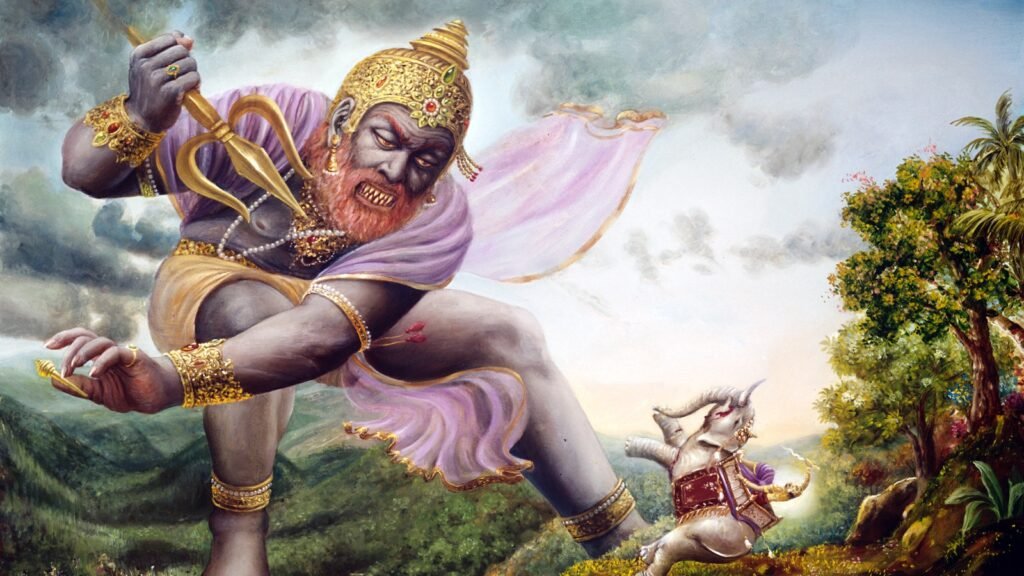Indra is the Vedic Hindu god of war, lightning, weather, thunder, rain and storms, often compared to other Indo-European gods such as Thor, Zeus and Jupiter. He is popularly known as the king of Svarga (heaven) and Devas in Hindu mythology.
God of: Thunder, rain and war
Wife: Indrani
Father: Rishi Kashyapa
Mother: Prithvi/Aditi
Siblings: Mitra, Aryamana, Varuna, Amsha, Bhaga, Surya, Pusha

7: The oldest mention of Indra is found in modern-day Syria and Anatolia
The oldest mention of Indra was not found in India but in two ancient treaties discovered in the archaeological ruins of Hattusa in Turkey. The treaties between the Mittani king Sattiwaza and the Hittite king Suppiluliuma dated back to the 15th century BCE, invoking Indra and Agni, among others.
6: Indra is often portrayed as a heavy drinker who gives in to anger, jealousy, lust and hatred
Numerous stories associated with Indra portray him as a heavy drinker of the godly drink of the Vedas known as Soma and a womanizer. He is often thrown out of his kingdom by the demons and then reinstated by Shiva, Vishnu and Brahma, symbolizing why human beings should not give into lust, jealousy, anger and insecurity.
5: Indra is often depicted riding on a white elephant and wielding a thunderbolt weapon
The iconography featuring Indra often represents him riding a white elephant known as Airavata and wielding a lightning bolt weapon called Vajra. The Buddhist iconography features Airavata with three heads, while the Jain iconography features five heads.
4: Indra is very rarely worshipped in modern-day Hinduism
Despite being one of the most popular gods of the Vedic era, Indra is very rarely worshipped by modern-day Hindus. The worship of Indra lost prominence after the incarnation of Vishnu as Krishna during the Puranic Era. According to Bhagwad Geeta, Indra sent severe rains in Vrindavan after Krishna asked people to stop worshipping Indra. However, the people were rescued after Krishna sheltered them by lifting the Govardhan mountain. Bhogi Pongal, a festival celebrated in the southern part of India, was traditionally known as Indra Vizha but is no longer correlated to Indra.
3: Indra’s birth symbolizes the end of the ice age
The story of the birth of Indra is considered to symbolically record the end of the ice age about 12000 years ago. Rigved describes a time when demon Vrtra had imprisoned all the waters of the earth. All the devas tried but failed to release the water despite using all their powers. The goddess Aditi thought Indra might be a disgrace to her and tried to hide him. However, Indra tore his way out of his mother and was born with a thunderbolt in his hand. He drank copious amounts of Soma and struck Vrtra with his thunderbolt to release the waters from captivity.
2: Indra is the leader of the Devas
Indra is the title given to the king of gods in Vedic and Buddhist mythology. He resides in Amaravati, the capital city of Svarga, the place where the superhuman beings and Devas live. However, Indra was reduced to a figure of ridicule in the post-Vedic Puranic and Buddhist texts. It is widely believed that several Indra’s are replaced during the cycle of creation as he suffers from the curse of rebirth. In Jain mythology, Indra appears with his wife Indrani and rules over superhuman-like beings as the King of Svarga.
1: Indra is the most praised god in the Vedas
Indra is the most prominent god in the Vedas. The Vedic hymns are primarily devoted to three gods, Indra, Agni and Soma, with 250 hymns of the Vedas being dedicated to Indra, most to any god.
